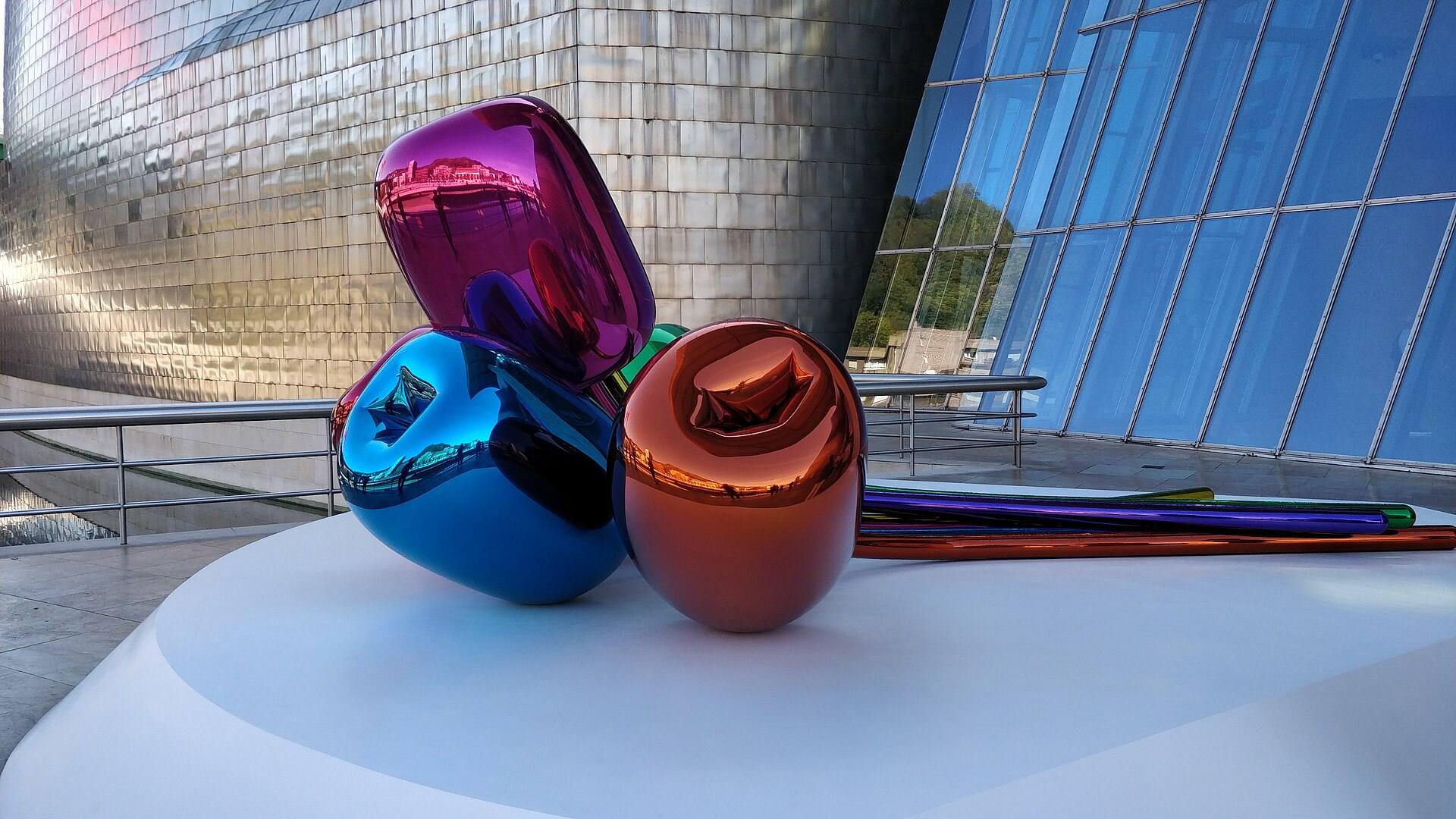
What Is Jeff Koons Known For
In the world of contemporary art, where shock, spectacle, and shine often battle for attention, one name gleams above the rest, Jeff Koons. With a studio that functions more like a high-tech laboratory and a vision that redefines the border between high culture and mass production, Koons has carved a space uniquely his own. Whether it’s a 10-foot balloon dog made of mirror-polished stainless steel or a porcelain Michael Jackson with his pet chimpanzee Bubbles, his works are as provocative as they are visually dazzling.
But who is Jeff Koons? What is he known for, and why do his sculptures command tens of millions of dollars at auction? Let’s dive into the shimmering world of Jeff Koons, a tale of pop culture, controversy, and creative ambition on an industrial scale.
Born in York, Pennsylvania, in 1955, Jeffrey Lynn Koons grew up in a household that combined the practicality of commerce with the spirit of creativity. His father owned a furniture store and was a keen decorator, while his mother was a seamstress. From an early age, Koons showed an interest in art, fascinated by Salvador Dalí and inspired by the visual clarity of advertising and pop art.
Koons first gained widespread attention in the 1980s as part of the Neo-Pop movement. He was seen as a successor to Andy Warhol, not just in his embrace of pop culture imagery but in his unapologetic use of commercial and industrial production methods.
What set Koons apart was his vision: art as a mirror, not only literally, through the reflective surfaces of his sculptures, but metaphorically, by holding up popular culture and challenging traditional notions of taste, beauty, and artistic value. He is known for using kitsch, consumer products, celebrities, and toys as central motifs. His work deliberately blurs the lines between fine art and commercial culture, between the sublime and the banal.
How Does Jeff Koons Make His Sculptures?
If you imagine Koons alone in a studio chiseling marble or molding clay, think again. Koons operates more like the CEO of a high-end creative enterprise. His art sculptures are rarely, if ever, made by his own hands. Instead, he employs a team of over 100 highly skilled assistants, including painters, sculptors, CAD designers, welders, and materials engineers. His studio, once compared to a medical lab, runs with near-mechanical precision.
Koons begins each project with a detailed concept or idea. He draws inspiration from mass culture, advertisements, toys, classical art, childhood memories, and then produces sketches and 3D models, often using digital software. His team then works to engineer these concepts into physical reality, using materials like stainless steel, porcelain, wood, aluminum, and glass.
One of the most crucial aspects of Koons’ work is perfection. Every surface must be flawless, every color exact, and every angle pristine. The mirror-like surfaces of his sculptures are hand-polished for months, sometimes years, to eliminate any blemish. This obsession with perfection isn’t just aesthetic; it reflects Koons’ belief that art should uplift and communicate transcendence.
Most Famous Jeff Koons Sculptures
Jeff Koons has created a wide array of works over the past four decades, but a few stand above the rest in terms of cultural impact, popularity, and value.
1. Balloon Dog (1994–2000)
Arguably his most iconic work, Balloon Dog is part of his Celebration series. Made of mirror-polished stainless steel with transparent color coating, the sculpture is a hyper-realistic rendering of a balloon twisted into a dog shape, on a monumental scale.
There are five versions of Balloon Dog, each in a different color (blue, magenta, yellow, orange, and red). The works are both whimsical and profound, juxtaposing the innocence of childhood with the grandeur of monumental sculpture.
In 2013, Balloon Dog (Orange) sold at Christie’s for $58.4 million, setting a record at the time for the most expensive work sold at auction by a living artist.
2. Rabbit (1986)
Another legendary piece, Rabbit is a stainless-steel inflatable bunny, based on a child’s toy. Created in 1986, it helped establish Koons as a serious figure in the art world.
Its reflective surface captures and distorts the viewer and the surrounding environment, turning the piece into a funhouse mirror of sorts, an interplay of viewer, object, and space.
In May 2019, Rabbit was sold at Christie’s for $91.1 million, breaking Koons’ own record and momentarily making him the world’s most expensive living artist.
3. Michael Jackson and Bubbles (1988)
This porcelain sculpture of Michael Jackson and his pet chimpanzee, Bubbles, is part of Koons’ Banality series. The piece captures the pop star in a near-regal pose, wrapped in gold and white with an expressionless gaze.
The sculpture shocked and intrigued the art world, raising questions about celebrity worship, media culture, and the limits of taste. It’s one of Koons’ most controversial works and solidified his status as a provocateur.
4. Puppy (1992)
Standing over 40 feet tall, Puppy is a topiary sculpture of a West Highland Terrier, made entirely from live flowers. It’s whimsical, optimistic, and massive.
Originally exhibited in Germany, Puppy now sits permanently outside the Guggenheim Museum Bilbao in Spain, greeting visitors with thousands of blooming flowers arranged in a steel frame.
5. Play-Doh (1994–2014)
A towering sculpture of seemingly stacked, multicolored Play-Doh, this piece took 20 years to complete. Its construction was technically demanding, as Koons wanted it to appear as soft, pliable clay but made it from aluminum, painted with uncanny realism.
It is another testament to his belief in childlike joy, monumental scale, and technical mastery.
How Much Are Jeff Koons’ Sculptures Worth?
The value of Jeff Koons’ art is staggering, reflecting both his cultural significance and the immense demand among collectors. Here’s a breakdown of some notable sales and valuations:
| Artwork | Year Sold | Sale Price | Auction House |
|---|---|---|---|
| Rabbit | 2019 | $91.1 million | Christie’s |
| Balloon Dog (Orange) | 2013 | $58.4 million | Christie’s |
| Tulips | 2012 | $33.6 million | Christie’s |
| Popeye | 2014 | $28 million | Sotheby’s |
| Play-Doh | 2014 | $20 million (est.) | Private Sale |
Even smaller or less famous works by Koons can sell for several hundred thousand to several million dollars. The combination of brand power, technical innovation, and high production values makes each Koons piece an investment-level acquisition.
Collectors of Koons’ work include Steve Wynn, Eli Broad, François Pinault, and Dakota Johnson and Chris Martin, a testament to his crossover appeal in art, business, and celebrity culture.
Where Can You Find Jeff Koons’ Sculptures?
Koons’ sculptures are displayed in prestigious museums, public spaces, and private collections around the world. Some are permanent installations, while others tour as part of temporary exhibitions.
Major Museums and Public Installations:
Guggenheim Museum Bilbao, Spain – Home to Puppy, a floral sculpture that has become an icon of the city.
The Broad, Los Angeles, USA – Features Balloon Dog (Blue) and Tulips.
The Whitney Museum of American Art, New York, USA – Hosted Koons’ largest-ever retrospective in 2014.
Centre Pompidou, Paris, France – Holds multiple Koons works in its permanent collection.
Versailles Palace, France – In 2008, Koons caused a stir by exhibiting his sculptures amidst the Baroque interiors of the French palace.
Museum of Contemporary Art, Chicago, USA – Houses several Koons pieces in its collection.
The Ashmolean Museum, Oxford, UK – Temporarily hosted works during special exhibitions.
Public Locations:
Rockefeller Center, New York – Temporary exhibitions have showcased Seated Ballerina and Split-Rocker.
Doha, Qatar – The Dugong sculpture, a massive marine-themed work, was unveiled in 2022 near the National Museum of Qatar.
In addition, Koons frequently collaborates with brands and appears in global art fairs, so his work continues to circulate in both traditional and commercial contexts.
The Art of Mirror and Meaning
Jeff Koons stands as one of the most polarizing and influential figures in contemporary art. His sculptures dazzle with technical brilliance and provoke with their unapologetic embrace of consumer culture. Whether he’s inflating childhood toys to monumental proportions or coating everyday objects in stainless steel, Koons invites us to reconsider our assumptions about value, taste, and what it means to be “art.”
For some, he is a master of illusion and craftsmanship, a postmodern genius reflecting our times with dazzling clarity. For others, he represents the commodification of art and the triumph of spectacle over substance. But love him or loathe him, there’s no denying: when a Jeff Koons sculpture appears, it’s impossible to look away.
Summary:
Jeff Koons is known for pop culture-inspired, hyper-polished sculptures.
He doesn’t make them by hand, his large studio uses advanced industrial processes.
His most famous works include Balloon Dog, Rabbit, Puppy, and Michael Jackson and Bubbles.
His sculptures sell for tens of millions of dollars, with Rabbit fetching $91.1M.
They’re located in major museums and public sites worldwide, like the Guggenheim Bilbao and The Broad LA.




